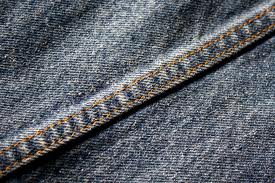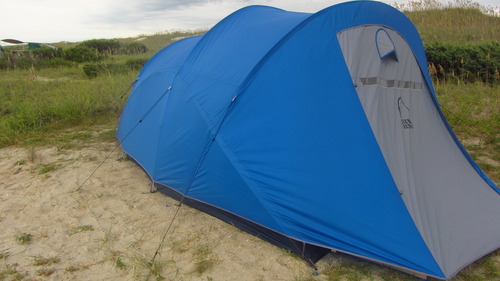Best Camping Tent
The best camping tent for you depends on the amount of people that will be sleeping in it, the type of camping you will be doing and the where you will be camping. You want your tent to be able to keep you dry when it rains and have good ventilation on those hot steamy nights.
Choosing the Best Tent for the Amount of Users
When the manufacturers of tents specify how many people a tent will hold, the number of people that will fit in a tent are shoulder to shoulder. If you have a family of four, do not buy a tent that sleeps four. Don't forget that each person has clothing and belongings such as toys, games, books and electronic stuff ( yuck) that they bring with them. These items take up room.
To satisfy everyone you should allot 1 1 / 2 spaces per person. This will give each person room for their stuff and a way to exit the tent without walking on anyone. If you have a family of four, find a tent that will sleep at least six. If you have an odd number in your family, round the number up to the next full number. The added space will be appreciated by all.
Type of Camping
You do not want to have to carry a 9 person tent on a backpacking expedition. Nor would you divide your family into 2 person tents if the children are young and you stay at campgrounds you drive into. If the kids are old enough they would like the privacy but you still have to keep an eye on them.
If you are staying at campgrounds, 1 large tent would suffice. It is personal preference as to whether to purchase a dome or cabin style tent. I, myself, prefer cabin tents because they allow more room to stand up. In a dome tent the highest point is the center and the sides slope in making it impossible to stand along the edges.
Both types have a square or rectangular floor pattern. Also, dome tents come with flies ( not the kind that buzz in your ear ) cabin tents do not. However, a cabin tent is easier to set up under a tarp. I use a cabin tent and if we suspect rain I set up a tarp to keep the tent dry even when folding it up. See our section on how to set up tarps. On the home page of this site I said that my first experience camping was a wash out because my family spent the night in a motel due to rain in the tent. So I have found ways to stay dry.
If you plan on camping in just the summer months you can use a tent with a partial fly ( tent cover ). A partial fly helps shade the tent making it cooler and also allows more ventilation. A full fly is preferred if you camp in cooler weather. The air space between the fly and tent offer a little insulation. Also in cooler temperatures a closed up tent will collect moisture from breathing and perspiration on the tent walls. With a full fly and enough screen area on the tent the moisture collects on the fly and is channeled down the fly to the ground. A partial fly does not have a dew point property where moisture collects on a cooler surface. It is not noticeable in a larger tent due to the volume of air in the tent but with smaller tents you will find puddles on the floor even if it did not rain.
If you backpack you will want a lighter and smaller tent. Also if you like to camp in the winter see our page on backpacking tents.
Tent Construction
You do not have to buy the most expensive or best brand name to buy a quality tent. You just have to know what to look for.
Tent Poles
All tents have poles unless you use a clothesline or ridge line to hold it up. Poles can be made of composite material or metal alloys. Then you have flexible and rigid. Of the flexible poles, aluminum is lighter than fiberglass and per diameter has a stronger tensile strength than fiberglass. When fiberglass gets cold it can become stiff and break easily when aluminum remains flexible. After extended and frequent use fiberglass can show wear such as splintering and fraying. The good character of fiberglass is it is less expensive than aluminum and easier to repair with duct tape.
Rigid poles are mostly aluminum but I have seen wooden and fiberglass rigid poles. The aluminum poles are pre bent for changing into roof supports. Wooden and fiberglass poles have metal sleeves to create bends. The disadvantage to wood and fiberglass is it is hard to find adjustable ones and the adjustable collars fray the poles.
Tent Floors
A good floor will help to keep you dry. Good floors are made of heavy nylon with a waterproof coating. The floor should come up off the ground much like part of the wall and form a tub. The stake loops should attach to the wall not the floor. It is OK for the stake loop to be connected at the floor wall seam. The purpose of the tub is to keep water from flowing into your tent from the ground. If you have a good tent floor and you set up your tent in a low area you will notice your tent is floating on a puddle and feels like a water bed. Don't forget to put a footprint under your tent to protect your floor.
You can use a blue tarp as a footprint but when you spread out the tarp do not have the edges extending beyond the tent walls. If it rains the water will collect on the tarp and flow under the tent. If you have a good floor, it will not leak but is irritating trying to walk on water.
Tent Screens
All tents have screens. They serve two purposes. Naturally one of them is to allow fresh air. The other is to allow moisture to escape. When you breathe, you exhale warm moist air. Over a few hours you can exhale enough moisture to make the inside of the tent damp. If you have a summer tent with a partial fly, in cold weather the tent fabric is cool enough to collect the moisture and create puddles inside without it raining.
The screen area should be at least 25 % of the total tent wall area. The screen should also be made of a no see-um mesh. No see-ums are very small flying insects that bite. They are so small that they are hard if not impossible to see. If they can get through your screen they will torment you all night.
Tent Fly
 It does not matter if you have a partial fly or a full fly. A fly is made of a light nylon a little heavier than the tent walls. The fly should also have a waterproof coating. A good coating will feel like a thin layer of rubber. The seams should be folded and double stitched like Wrangler and Levi blue jeans. Single sewn seams leak and rip easily. Don't forget to coat the seams with a seam sealer.
It does not matter if you have a partial fly or a full fly. A fly is made of a light nylon a little heavier than the tent walls. The fly should also have a waterproof coating. A good coating will feel like a thin layer of rubber. The seams should be folded and double stitched like Wrangler and Levi blue jeans. Single sewn seams leak and rip easily. Don't forget to coat the seams with a seam sealer.
Tent Body
After you have assembled your tent with all the above best details you cannot forget the tent body. I already mentioned the screening so that leaves the walls and zippers. The walls should be from rip stop nylon. Rip stop fabric has a weave that prevents rips from spreading. It is stronger than regular nylon fabric so it will last longer. As in the fly, the seams should be rolled and doubled stitched.
If you are looking at large tents get one with diving panels that offer a little privacy.
Nylon zippers do not corrode and are as durable as metal zippers. In cold weather metal zippers can freeze. So your tent should have nylon zippers. I have had better luck with zippers that have fewer teeth per inch than fine tooth zippers. This means the teeth are larger and have larger interlocking dimples. While many teeth per inch may be stronger, larger teeth are more forgiving and last longer. Larger teeth are more securely attached to the zipper fabric and do not get caught in the fabric as often. Also, larger teeth do not jam as often from dirt and sand.
Coleman Instant 14- by 10- Foot 8- Person Two Room Tent
Tent Care
If you have taken into consideration the above conditions, you should have a tent that will last for years under normal use and proper care. Never put your tent away wet. A wet tent will attract mold and mildew. Some people are allergic to mold and the tent will smell musty. Before you put your tent away make sure it is dry and clean, even if you have to set it up in the backyard when you get home. Remember, it doesn't have to rain to become damp.
If you transport your tent in a stuff sack, you should store the tent in one where the tent is not compressed. Tightly packing a tent in a stuff sack puts stress on the fabric and seams. Storing a tent loosely in a stuff sack is better than tightly rolling the tent up. When you fold and roll a tent you constantly fold it the same way each time. This causes the fabric in the folds to be worked more than the rest of the tent causing premature aging and weak spots. Use a separate bag for the stakes and poles. The pointy ends can damage your tent.
If you have to wash your tent use a mild detergent that does not have added fragrances. You don't want your tent to smell like roses or lemons in the woods. Harsh soaps can deteriorate the fabric and stitching. If possible only spot wash your tent and only use the gentle cycle if you put it in a washing machine.
When you are taking down your tent, do not pull the stakes out by the tent loop. You can pull the loop off and tear the fabric where it is attached. If you cannot grab the stake itself to pull it out of the ground, use a hammer or fulcrum placed under the tent stake head or retainer.
Now you know what to look for in your new tent. With proper care and use your tent will last for years and will be the best camping tent you ever had.







